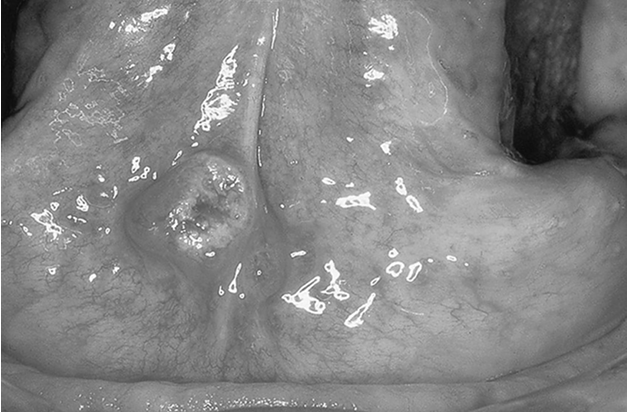


 النبات
النبات
 الحيوان
الحيوان
 الأحياء المجهرية
الأحياء المجهرية
 علم الأمراض
علم الأمراض
 التقانة الإحيائية
التقانة الإحيائية
 التقنية الحيوية المكروبية
التقنية الحيوية المكروبية
 التقنية الحياتية النانوية
التقنية الحياتية النانوية
 علم الأجنة
علم الأجنة
 الأحياء الجزيئي
الأحياء الجزيئي
 علم وظائف الأعضاء
علم وظائف الأعضاء
 الغدد
الغدد
 المضادات الحيوية
المضادات الحيوية|
Read More
Date: 2025-01-22
Date: 19-2-2016
Date: 19-2-2016
|
Definition
• Malignant epithelial neoplasm arising from the mucosal epithelium of the oral cavity.
Epidemiology
• Most frequent in the fifth and sixth decades.
• Incidence of 4/ 100 000 globally and mortality rate of 1.9 deaths/ 100 000.
• high incidence in Asia, Europe, and Latin America.
• Males > females.
• as smoking rates decline there is decrease in intraoral cancer.
Aetiology
• Smoking and high alcohol intake are the dominant risk factors for oral carcinoma. these two factors are strongly synergistic.
• Smokeless tobacco, betel quid also increases risk.
• Smoking- related cancers commonly show TP53 mutations.
• P16 only seen in 3% of OSCC.
Presentation
• early oral carcinomas appear as small red/ white/ ulcerated plaques and may be picked up during routine oral examination, often by dentists.
• advanced oral carcinomas present with problems with talking and eating due to tumour obstruction. Most frequent sites are tongue, floor of mouth, gingiva. In betel quid and tobacco chewing cultures it is the buccal mucosa.
• there may be coexisting neck swelling due to cervical lymph node metastasis.
Macroscopy
• early tumours appear as red/ white plaques (Fig. 1).
• advanced tumours appear as ulcerated exophytic masses.
Histopathology
• >90% are squamous cell carcinomas, characterized by invasive growth of epithelial cells showing variable squamous differentiation.
• tumours are graded into well, moderate, or poorly differentiated.
• Special subtypes include verrucous, papillary (good prognosis), spindle cell, adenosquamous (worse prognosis).
• tumour growth at the invasive front is divided into cohesive or non-cohesive.
• thickness >4 mm and bone invasion are poor prognostic factors.
Prognosis
• Conventional OSCC is aggressive— the 5- year survival is 80% for early disease and 20% for advanced tumours. these patients are also at high risk of developing multiple tumours due to a field change effect throughout the upper aerodigestive tract, particularly if there is high- grade dysplasia at the margins.

FIG1.early squamous cell carcinoma of the oral cavity, presenting as a persistent ulcerated lesion on the undersurface of the tongue . reproduced with permission from Clinical Pathology (Oxford Core texts), Carton, James, daly, richard, and ramani, pramila, Oxford University press (2006), p.452, Figure 19.4



|
|
|
|
بـ3 خطوات بسيطة.. كيف تحقق الجسم المثالي؟
|
|
|
|
|
|
|
دماغك يكشف أسرارك..علماء يتنبأون بمفاجآتك قبل أن تشعر بها!
|
|
|
|
|
|
|
العتبة العباسية المقدسة تواصل إقامة مجالس العزاء بذكرى شهادة الإمام الكاظم (عليه السلام)
|
|
|